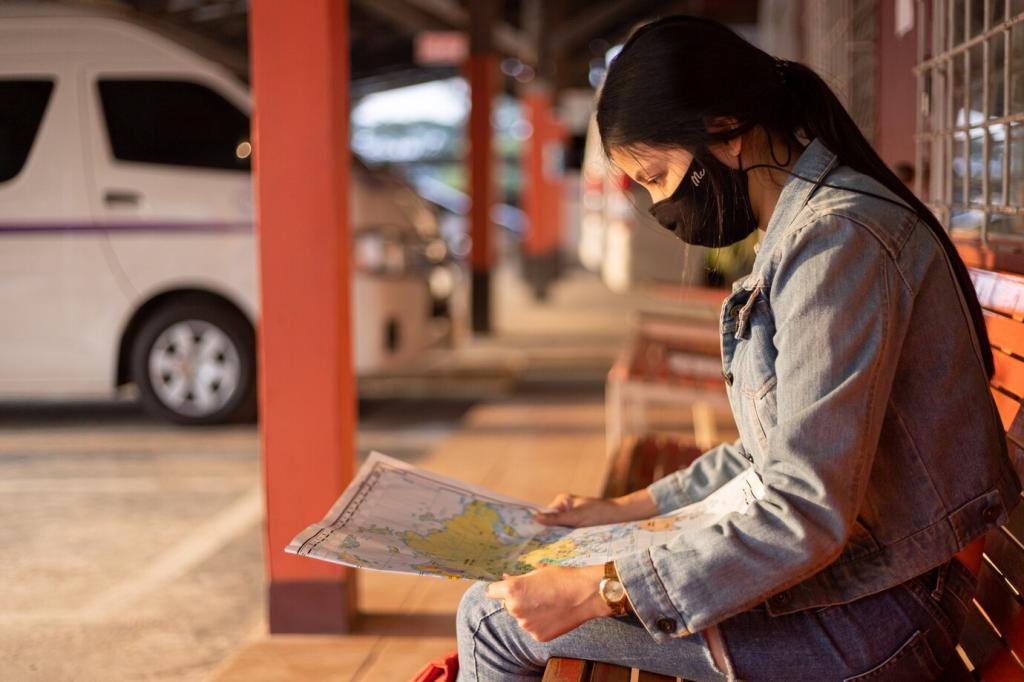Interactive Cultural Workshops for Guides: Engage, Interpret, Inspire
Chosen theme: Interactive Cultural Workshops for Guides. Step into a lively space where guiding becomes a participatory dialogue, culture is co-created with audiences, and every activity invites curiosity, empathy, and action. Join our community of guides—comment, subscribe, and bring these ideas to your next tour.


Why Interactivity Elevates Cultural Guiding
When guides shift from monologue to guided discovery, participants do more than listen—they make meaning. Hands-on choices, small-group tasks, and reflective prompts transform passive hearing into active learning, allowing culture to be encountered, questioned, and personally internalized.
Why Interactivity Elevates Cultural Guiding
Research-informed strategies like spaced prompts, retrieval practice, and multisensory cues improve retention. Interactive cultural workshops harness stories, objects, sounds, and participation, turning fleeting facts into emotionally anchored moments travelers recall long after the itinerary ends.
Designing Workshop Formats that Spark Participation
Role-Play and Paired Perspectives
Invite small groups to role-play stakeholders—artisan, historian, market vendor, elder, newcomer—and negotiate a shared decision. Guides facilitate reflection on trade-offs, traditions, and change, revealing the human dimensions behind artifacts, rituals, and contested narratives.
Object Handling and Story Circles
Use safe-to-touch replicas or everyday items with cultural meaning. In story circles, guests connect personal memories to objects, then hear community accounts. The juxtaposition builds empathy, prevents stereotypes, and highlights how meaning shifts across time and context.
Inclusive Icebreakers with Purpose
Begin with low-stakes, culturally relevant tasks: map a memory, match proverb to image, or decode a food label. Each icebreaker should prepare minds for deeper content, ensuring inclusivity, psychological safety, and genuine curiosity from the first five minutes.
Language that Listens
Model reflective listening and teach participants neutral, open-ended questions. Replace definitive claims with context-rich phrases, cite sources, and acknowledge uncertainty where it exists. This stance invites culture bearers’ voices while discouraging oversimplification and exoticization.
Power, Consent, and Reciprocity
Before using songs, stories, or images, ask permission and clarify intended use. Offer credit, compensation, or community benefits. Reciprocity can include donations, visibility for local initiatives, or co-created educational materials that communities approve and can use.
Scenario Clinic: Practice with Peers
Run quick-fire scenarios: a sacred space selfie request, a disputed origin story, or insensitive humor. Practice responses, debrief respectfully, and compile better phrasing. Subscribe to get our rotating scenario deck designed specifically for interactive cultural workshops for guides.
Technology that Deepens—not Distracts

Try live polls for myth-busting, QR-triggered micro-audios recorded by culture bearers, or instant translation cards for accessibility. Technology should unlock participation and context, then step aside so human connection leads every interactive cultural workshop moment.
Case Stories from the Field
The Market Map Game
In a bustling market, a guide invites teams to map food journeys—from farm to stall—by interviewing vendors. Laughter rises, relationships form, and myths are corrected respectfully. Post-tour feedback shows higher recall and greater appreciation for vendor expertise.
Museum on a Blanket
During a plaza stop, the guide unrolls a fabric ‘gallery’ of replicas and everyday tools. Participants curate mini-exhibits with labels and questions, then compare their interpretations to community narratives, learning how selection and framing shape cultural storytelling.
Night Walk, Local Voices
On an evening heritage walk, short audio stories by elders punctuate pauses. Guests jot reflections between stops, then share insights. The result is quieter, deeper listening—and heartfelt notes of gratitude sent back to the storytellers afterward.
Measuring Impact and Iterating
Choose measurable outcomes: empathy indicators, myth correction rates, or participant confidence using respectful language. Align every activity to these outcomes so evaluation feels natural, not bolted on after the experience ends.
